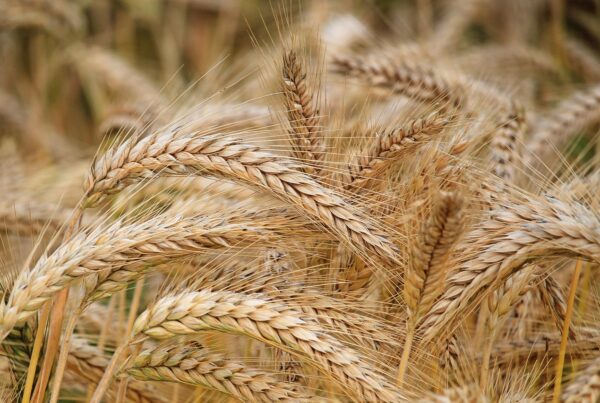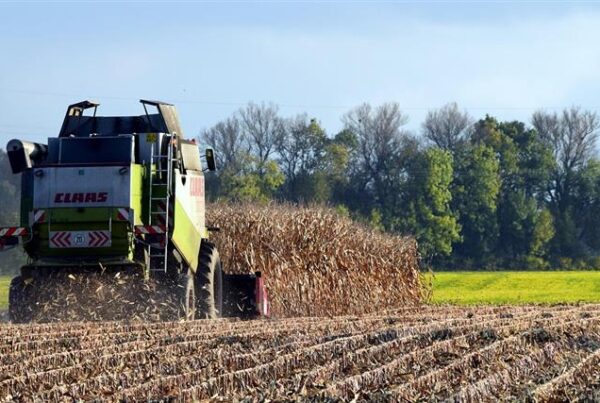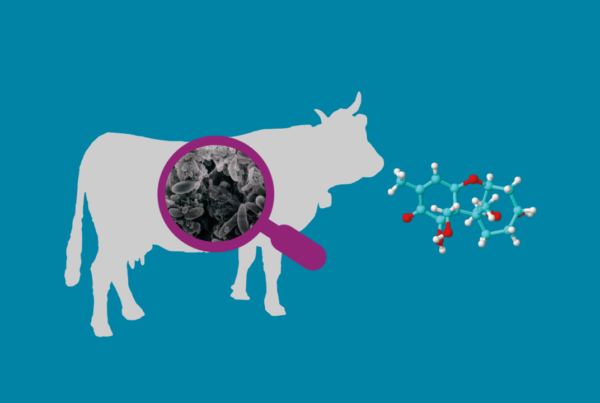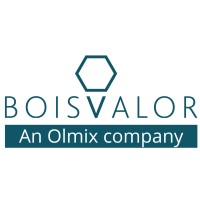Olmix Group’s international mycotoxin congress takes place in Amsterdam with renowned scientists addressing the main mycotoxin management related trends and issues.
The risk of mycotoxins, their origin and occurrence, the latest analysis and screening methods, and new scientific research on mycotoxin accumulation and transmission in animals were addressed at the Olmix Myco’Science international congress, a symposium born from the Olmix’s commitment to raise awareness around the global mycotoxin contamination challenge, which has become one of the main concerns by the experts and professionals from the feed and food industries.
Held at the Double Tree by Hilton Hotel in Amsterdam on the 12th April and live streamed to the Olmix’s customers and partners all around the world, the congress counted on the presence of some of the most renowned scientists, who joined the congress to share their views, advances and research on the main mycotoxin risk management related issues.
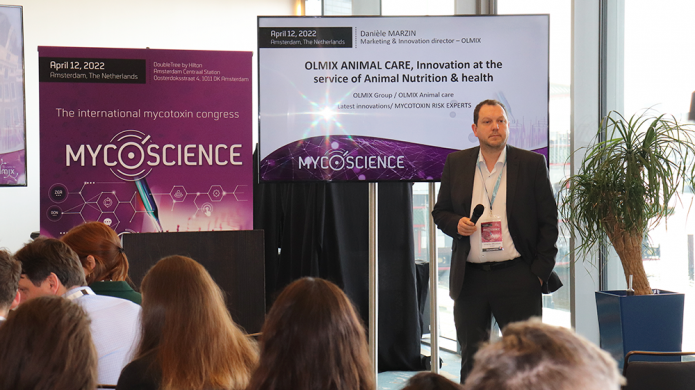
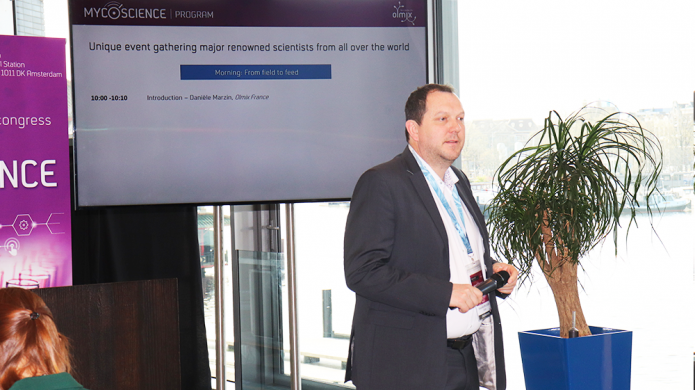
Sébastien Balusson, Olmix Animal Care BU Director, welcomed the attendees.
Through two dynamic technical sessions, “From field to feed” and “From feed to animals”, speakers shed light on a wide range of topics, giving complete insight into mycotoxin occurrence and its effects on animals’ health and performance.
From field to feed: Mycotoxin development, occurrence and detection
“For more than 15 years, Olmix is a leader in providing solutions for mycotoxin risk management. Mycotoxin diagnostic, analysis, occurrence and management are still among Olmix’s main priorities as mycotoxins are considered to be one of the main concerns in the food and feed industry. This is why it today we are pleased to host a congress like the Myco’Science and count on the best experts to share their knowledge and expertise with us,” Msc. Danièle Marzin, Olmix’s Marketing & Innovation Director, said while opening the event.
The mycotoxin scenario that we currently know is very likely to change in future because of climate changes. This new context affects the whole production cycle, involving plants and animals, as it was well explained by Professor Paola Battilani, from Unicatt (Italy), who described the different factors affecting mycotoxins development and profile of contamination in crops with an important emphasis on these climate conditions like temperature or humidity.
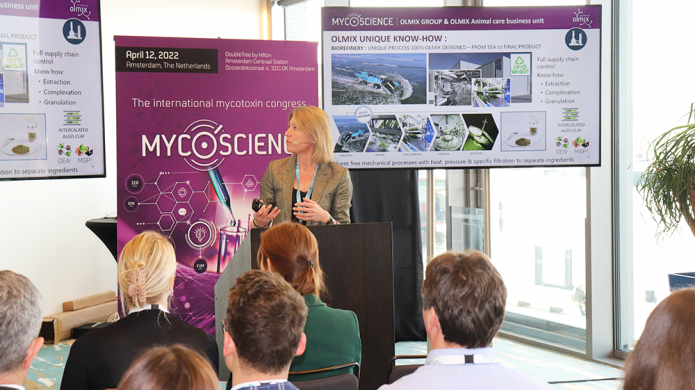
Danièle Marzin, Olmix’s Marketing & Innovation Director.
“When it comes to plants, we are seeing that mycotoxin contamination is becoming rule and not the exception. The variability of mycotoxin is increasing, and this is applicable to fungi too. Climate change is undermining the consolidated global knowledge that we had on fungi and mycotoxin distribution.” Professor Paola Battilani, from Unicatt (Italy), explained.
Thus, it is a fact that several factors along with climate change are changing the rules of the game, which is making mycotoxin production very complex and difficult to predict. That is why mycotoxin analysis and screening are becoming a key tool to evaluate the risk of mycotoxins, with several and innovative options available in the industry.
“Several tools are available for raw materials and feed screening, either rapid methods as ELISA (strips or microwell) or other reference methods like chromatography. Chromatography is also widely used to detect mycotoxins in animals fluids or tissues but with specific requirements on samples collection and detection limits that still makes this analysis not usable for field diagnostic,” Dr. Alix Pierron (ENVT,France), said during the second speech of the day.
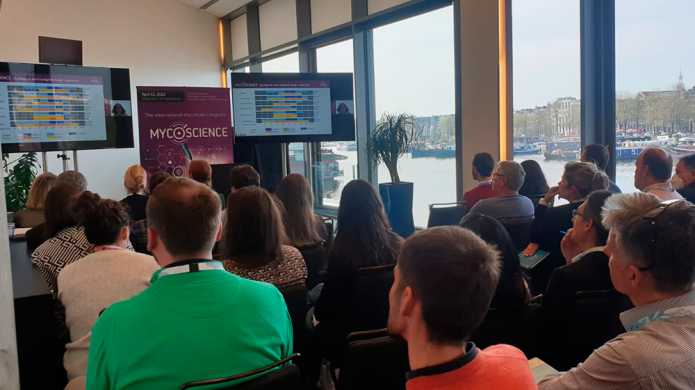
Professor Paola Battilani (Unicatt, Italy) joined the congress online.
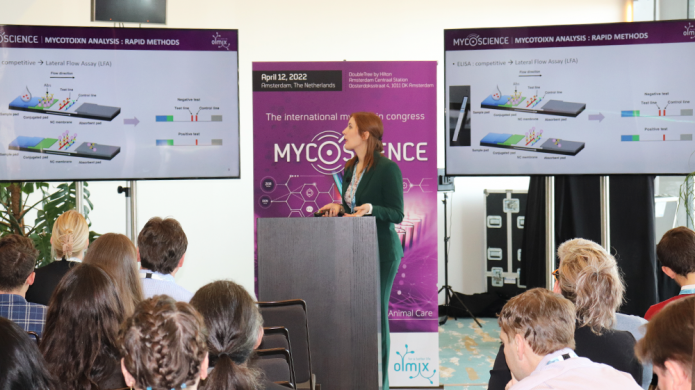
Dr. Alix Pierron (ENVT,France).
To better understand mycotoxin occurence, Msc. Margriet Faber, Olmix For Feed Product Specialist, took the lead and shared the details of the Olmix’ Myco’screen survey program that Olmix has conducted in partnership with Labocea (France). The data is based on 45 analyzed mycotoxins per sample with chromatography (LC- MS/MS). The database consists of about 15,000 samples from 60 countries and various feedstuffs.
The details of this survey illustrates the importance of polycontamination in feed materials (75% of the samples contain more than 5 mycotoxins): fusarium mycotoxins and especially DON are the most frequent mycotoxins. Furthermore, the presented data shows the importance of DON derivates, such as acetyl forms and nivalenol that are not detected with rapid methods. This valuable database permits to evaluate the risk of other mycotoxins families such as alkaloids and Alternaria mycotoxins… Also, mycotoxin risk was reviewed depending on the type and origin of materials with important differences in profiles of contamination.
In line with the importance of mycotoxin analysis and new emerging innovative methods, it was then Dr. Adriano Mallmann’s (Pegasus Science, Brazil) turn to highlight the promising perspectives of NIR spectroscopy to speed up in-house raw material screening in feed mills.
“This non-destructive and rapid method widely used for nutritional analysis is now also used to detect mycotoxin in Brazil on basic raw materials such as corn. This method has a clear advantage against others that are time-consuming and require sample preparation,” he explained.
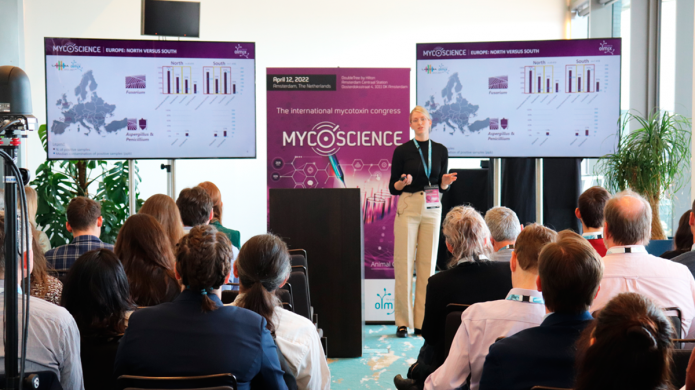
Msc. Margriet Faber (Olmix, the Netherlands)
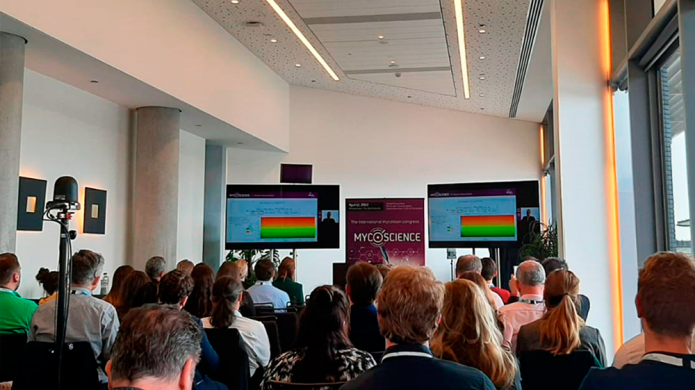
Dr. Adriano Mallmann’s (Pegasus Science, Brazil), joined the conference online.
From feed to animals: The impact of mycotoxins in animals
The second session of the Myco’Science, “From feed to animals”, put the focus on the consequences of the presence of mycotoxins on animal health and performances.
It is well-known that mycotoxins significantly impact the technical performance of livestock. All animal species are vulnerable to mycotoxins, even at low doses, as they appear in polycontamination with potential detrimental synergies, and they are one of the causes for disrupting the immune system. Actually, during the past decades many studies show that the first target of mycotoxins is the gut, leading to various issues on animals such as poor feed efficacy, gut barrier disruption and immune troubles.
Professor Isabelle Oswald (INRAe, France) a major contributor in the understanding of mycotoxin impact on gut health, had it clear:
“Mycotoxins affect the immune response with consequences in terms of susceptibility to infectious diseases and reduction of vaccine efficacy. Also, they alter the intestinal barrier function with consequences on pathogen translocation across the intestine,” she stated.
Pr. Oswald then illustrated the disruptive effect of several mycotoxins, especially DON, on gut morphology and intestinal barrier function, with specific highlights in how tight junctions and TEER are affected due to the presence of mycotoxins in the gut.
New findings on the transfer of mycotoxins to animals were afterwards presented following two research partnership between Olmix with ENVT (France) and Schothorst Feed Research center (the Netherlands). These studies allowed Olmix to successfully evaluate the efficacy of its algae-clay technology, being these results recently published through several peer-reviewed scientific papers.
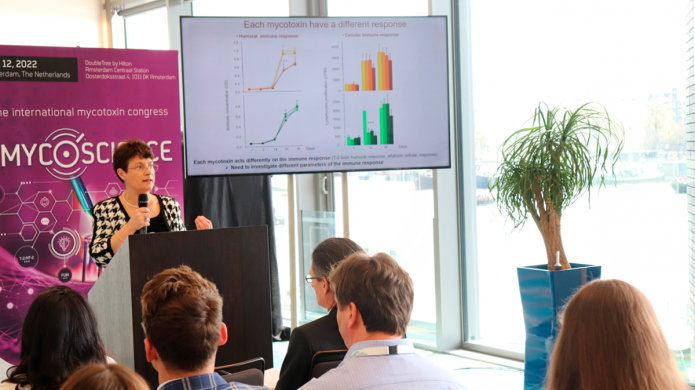
Professor Isabelle Oswald (INRAe, France).
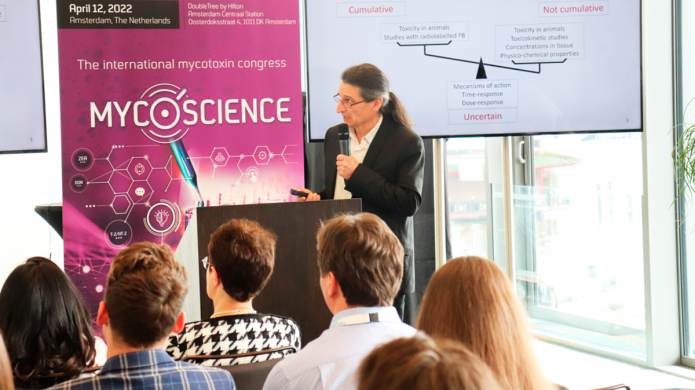
Pr. Philippe Guerre (ENVT, France).
The first study was delivered by Pr. Philippe Guerre (ENVT, France), who talked about Fumonisin deposit in broiler tissues: “As shown in this study, fumonisins B1 but also fumonisins B2 accumulated in the liver and breast muscle. This is the first study ever demonstrating an accumulation of fumonisins in broiler tissue over the time.”
The study by Pr. Guerre also demonstrates that in presence of an algoclay based decontaminant produced by Olmix, this fumonisins accumulation can be reduced significantly by more than 40% and 50% in broiler’s liver and breast muscle respectively. All data is available in a peer-reviewed paper published in the scientific magazine Toxins.
The second case of study and the last conference of the day was successfully delivered by Dr. Regiane Santos (SFR, the Netherlands) who took up the torch to discuss the latest scientific research on the transmission of ZEN and DON from sows to piglets.
“At Schothorst Feed Research Center, we recently carried out research on the transmission of zearalenone, deoxynivalenol, and their derivatives from sows to piglets during Lactation. This research has shown that realistic levels of ZEN and DON in the feed of sows are transmitted via colostrum and milk from sows to piglets. The exposure to those mycotoxins in early life of piglets may have implications for their reproductive performances later in life. Prolonged lactation periods will increase the risk of lactational exposure.”
This research also demonstrates that in the presence of an algoclay based decontaminant produced by Olmix, the level of mycotoxin in sows and piglet’s serum was significantly reduced. The full paper was published in Frontiers in Veterinary Science.
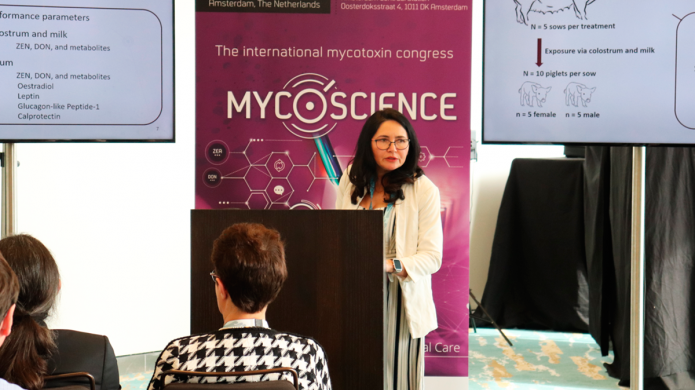
Dr. Regiane Santos (SFR, the Netherlands).
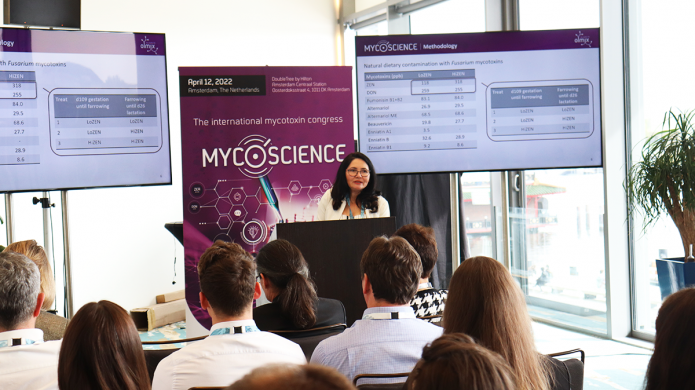
Daniele Marzin finally highlighted the concrete and innovative solution developed by Olmix to better manage mycotoxin risk and the indispensable tools accompanying this offer to make the right decision at the right moment.
The Olmix Myco’Science congress closed its doors with Msc. Danièle Marzin presenting the concrete and innovative solution developed by Olmix to better manage mycotoxin risk and the must-have tools for analysis and decision-making.
The Olmix Animal Care team wants to thank you for joining us at the Olmix Myco’Science!
